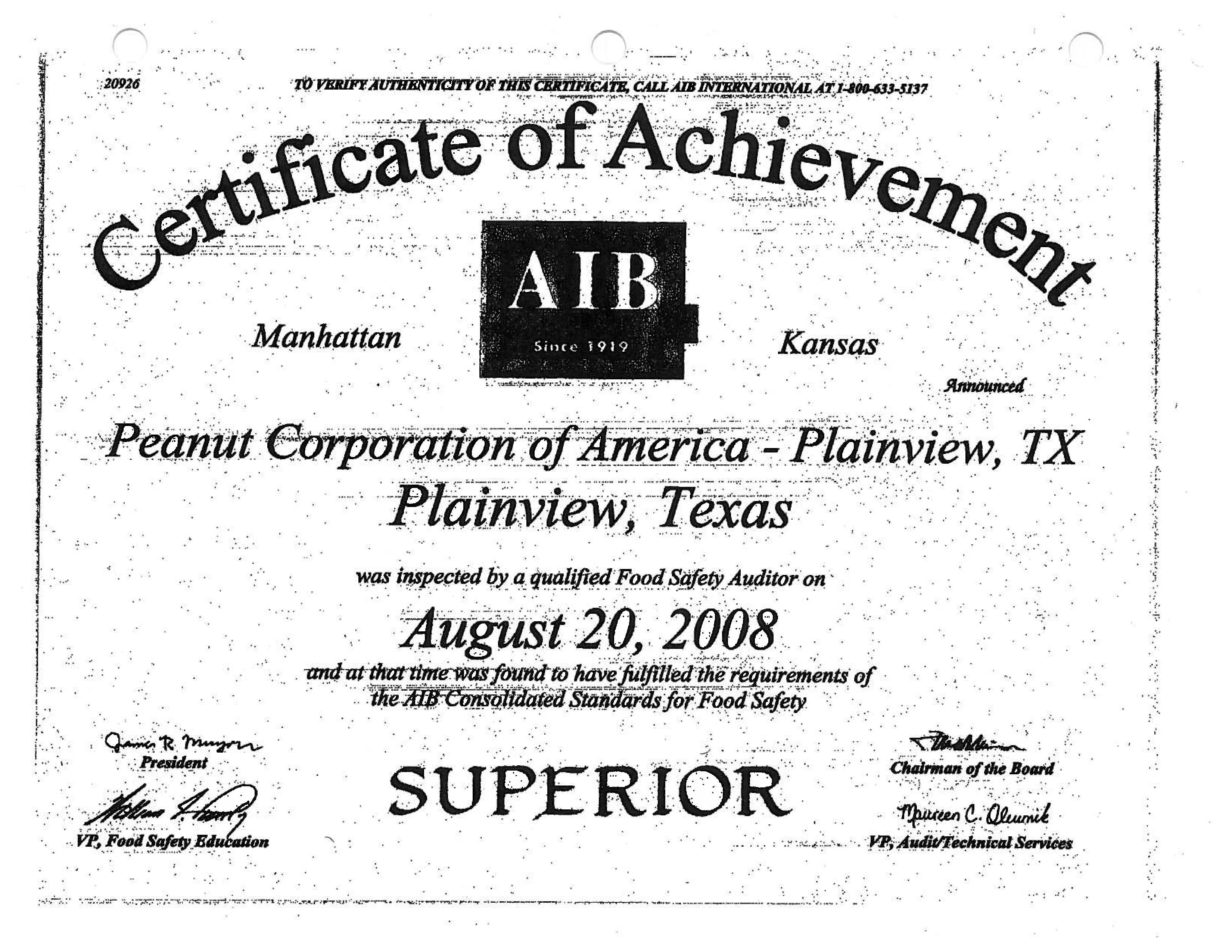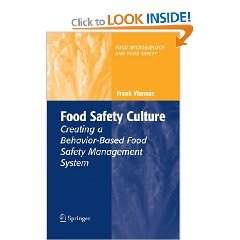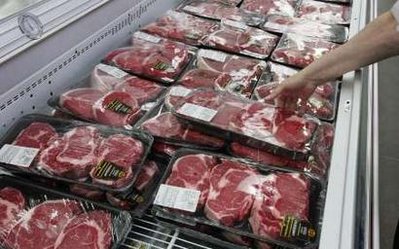The voluntary quality control system widely used in the nation’s $1 trillion domestic food industry is rife with conflicts of interest, inexperienced auditors and cursory inspections that produce inflated ratings, according to food retail executives and other industry experts.
I’ve been saying that for a long time, but this is the Washington Post version, published this morning. I especially like the pictures of the  Montgomery Burns Awards for Outstanding Achievement in the Field of Excellence, courtesy of AIB, the Manhattan, Kansas-based audiots that gave a stellar rating to PCA and Wright Eggs just prior to terrible food safety outbreaks and revelations of awful production conditions (see below).
Montgomery Burns Awards for Outstanding Achievement in the Field of Excellence, courtesy of AIB, the Manhattan, Kansas-based audiots that gave a stellar rating to PCA and Wright Eggs just prior to terrible food safety outbreaks and revelations of awful production conditions (see below).
The system has developed primarily because large chain stores and food producers, such as Kellogg’s, want assurances about the products they place on their shelves and the ingredients they use in making food. To get that, they often require that their suppliers undergo regular inspections by independent auditors. This all takes place outside any government involvement and without any signals – stamps of approval, for instance – to consumers. (That’s four-year-old Zoe Warren, right, of Bethesda, who was hospitalized in 2007 after contracting salmonella poisoning after eating a chicken pot pie. The photo is by Susan Biddle for the Washington Post.)
The third-party food safety audit scheme that processors and retailers insisted upon is, in many cases, no better than a financial Ponzi scheme. .jpg) The vast number of facilities and suppliers means audits are required, but people have been replaced by paper.
The vast number of facilities and suppliers means audits are required, but people have been replaced by paper.
In fact, most foodmakers, even those with problems, sail through their inspections, said Mansour Samadpour, who owns a food-testing firm that does not perform audits. "I have not seen a single company that has had an outbreak or recall that didn’t have a series of audits with really high scores.”
Third-party food audits, like restaurant inspection, are a snapshot in time. Given the international sourcing of ingredients, audits are a requirement, but so is internal food safety intelligence to make sense of audits that are useful and audits that are chicken poop.
Industry experts say some "third-party" inspections can be rigorous. Those that audit using internationally recognized private benchmarks "are much  more thorough," said Robert Brackett, former senior vice president of the Grocery Manufacturers Association. "But they’re less likely to be used because they are much more expensive."
more thorough," said Robert Brackett, former senior vice president of the Grocery Manufacturers Association. "But they’re less likely to be used because they are much more expensive."
Audits, inspections, training and systems are no substitute for developing a strong food safety culture, farm-to-fork, and marketing food safety directly to consumers rather than the local/natural/organic hucksterism is a way to further reinforce the food safety culture.
Will Daniels, who oversees food safety for Earthbound Farm, the folks who brought E. coli O157:H7 in bagged spinach in 2006 that sickened 199 and killed four, said, Earthbound regularly received top ratings in third-party audits, including one exactly a month before the tainted spinach was processed, adding,
"No one should rely on third-party audits to insure food safety."
“… if the incentive is to pass with flying colors, it creates a disincentive to air your dirty laundry and get dinged and lose a customer over it.”
After the E. coli outbreak, Earthbound put in place an aggressive testing and safety program that includes outside audits but also requires Earthbound’s own inspectors to show up unannounced to check suppliers. The company tests its greens for pathogens when they arrive from farms and again when they are packaged.
Too bad Earthbound didn’t figure all this out after the 28 other outbreaks involving leafy greens prior to the deadly 2006 outbreak.
Cost is another factor.
Food companies often choose the cheapest auditors to minimize the added expense of inspections, which range from about $1,000 to more than $25,000.
The foodmakers can prepare for audits because they often know when inspectors will show up.
And auditors have a range of experience and qualifications, from recent college graduates to retired food industry veterans. They sometimes walk through a plant, ticking off a checklist to produce a score, Samadpour said. Basic inspections do not typically include microbial sampling for bacteria.
In a written response to questions, Brian Soddy, AIB‘s vice president of marketing and sales, said company audits are intended to give food  manufacturers "guidance and education for improvement."
manufacturers "guidance and education for improvement."
Producers have the ultimate responsibility, he said, adding that the audits are voluntary and not intended to replace any FDA regulatory inspections.
AIB said last week that it is reevaluating its "superior" and "excellent" rating systems because they "have led to confusion in the wake of recent incidents," Soddy wrote.
Some retailers include inspections as just one piece of their safety programs.
Costco, for example, has its own inspectors but also requires its estimated 4,000 food vendors to have their products inspected according to a detailed 10-page list of criteria. Private auditors must X-ray all products for "sticks and stones, bones in seafood – anything you can think of that might be in hot dogs, baked goods, outside of produce," said Craig Wilson, Costco’s assistant vice president for food safety and quality assurance.
Costco maintains an approved list of about nine audit firms. The list does not include AIB.
Wal-Mart requires suppliers of private-label food products sold in its stores and Sam’s Club to be audited using private internationally recognized standards.
In addition to conducting its own product testing, Giant Food requires its vendors to be audited from a list of about a dozen approved firms.
.jpg) science-based, and more effective risk reduction strategies, models, and processes. This quote by Stephen Covey illustrates this point quote well. He said, “Management works in the system; leadership works on the system.”
science-based, and more effective risk reduction strategies, models, and processes. This quote by Stephen Covey illustrates this point quote well. He said, “Management works in the system; leadership works on the system.” 
.jpg) inspection and microbiological testing, which the industry has employed for years. While those strategies have improved over time, it’s important for companies to take new approaches.
inspection and microbiological testing, which the industry has employed for years. While those strategies have improved over time, it’s important for companies to take new approaches..jpg) Saturday retailers are willing to work with suppliers on reasonable cost increases related to improved meat product safety.
Saturday retailers are willing to work with suppliers on reasonable cost increases related to improved meat product safety..jpg) than those issued by the government, and the third-party assurances carry weight in the market.
than those issued by the government, and the third-party assurances carry weight in the market. at the store between December 30, 2010 and January 4, 2011, or consumed meat or cheese sliced at the deli counter from January 5 to January 10, 2011 should receive hepatitis A vaccine as a precaution. Individuals who ate or purchased deli items after this time period are not at risk of contracting the disease.
at the store between December 30, 2010 and January 4, 2011, or consumed meat or cheese sliced at the deli counter from January 5 to January 10, 2011 should receive hepatitis A vaccine as a precaution. Individuals who ate or purchased deli items after this time period are not at risk of contracting the disease.
 Montgomery Burns Awards for Outstanding Achievement in the Field of Excellence, courtesy of AIB, the Manhattan, Kansas-based audiots that gave a stellar rating to PCA and Wright Eggs just prior to terrible food safety outbreaks and revelations of awful production conditions (see below).
Montgomery Burns Awards for Outstanding Achievement in the Field of Excellence, courtesy of AIB, the Manhattan, Kansas-based audiots that gave a stellar rating to PCA and Wright Eggs just prior to terrible food safety outbreaks and revelations of awful production conditions (see below)..jpg) The vast number of facilities and suppliers means audits are required, but people have been replaced by paper.
The vast number of facilities and suppliers means audits are required, but people have been replaced by paper. more thorough," said Robert Brackett, former senior vice president of the Grocery Manufacturers Association. "But they’re less likely to be used because they are much more expensive."
more thorough," said Robert Brackett, former senior vice president of the Grocery Manufacturers Association. "But they’re less likely to be used because they are much more expensive." manufacturers "guidance and education for improvement."
manufacturers "guidance and education for improvement." program that would focus on sustainable agriculture among its food suppliers, as the retail giant tries to expand its efforts to improve environmental efficiency.
program that would focus on sustainable agriculture among its food suppliers, as the retail giant tries to expand its efforts to improve environmental efficiency.(1).jpg) management is key to enhancing food safety. An edited excerpt is below:
management is key to enhancing food safety. An edited excerpt is below: standards. But as stated so elegantly by B.F. Skinner (1953), behavior is a difficult subject, not because it is inaccessible, but because it is extremely complex. While both of these activities (training and inspections) are important, behavior-based food safety managers realize they are not enough to achieve food safety success. They understand the complexity of behavior and, before jumping to an overly simplistic solution; they study and analyze the cause of the performance problem (lack of skill, ineffective work system, lack of motivation, etc) to propose the right solution.
standards. But as stated so elegantly by B.F. Skinner (1953), behavior is a difficult subject, not because it is inaccessible, but because it is extremely complex. While both of these activities (training and inspections) are important, behavior-based food safety managers realize they are not enough to achieve food safety success. They understand the complexity of behavior and, before jumping to an overly simplistic solution; they study and analyze the cause of the performance problem (lack of skill, ineffective work system, lack of motivation, etc) to propose the right solution.
 programs.
programs..jpg) trash earlier this year on the Iowa farm at the center of the national egg recall, but didn’t notify health authorities.
trash earlier this year on the Iowa farm at the center of the national egg recall, but didn’t notify health authorities. everyone to pay attention in the absence of an outbreak – it’s that prevention thing.
everyone to pay attention in the absence of an outbreak – it’s that prevention thing. won’t because that would imply that other food is unsafe. Well guess what? Other food is unsafe. The best way the consumers can act is through their buying power. Right now they are doing it through the B.S. organic stuff. They are being held hostage by people who don’t make direct claims about food safety but hint at it. Why else do you think they buy natural or local?
won’t because that would imply that other food is unsafe. Well guess what? Other food is unsafe. The best way the consumers can act is through their buying power. Right now they are doing it through the B.S. organic stuff. They are being held hostage by people who don’t make direct claims about food safety but hint at it. Why else do you think they buy natural or local? based on personal preference and lifestyle choices. Cool. But there are some microbiological basics that food safety types have to pay attention too.
based on personal preference and lifestyle choices. Cool. But there are some microbiological basics that food safety types have to pay attention too. The new program requires Walmart and Sam’s Club beef suppliers to implement controls that would significantly reduce potential contamination levels and validate that the measures they’ve implemented are effective through specialized testing.
The new program requires Walmart and Sam’s Club beef suppliers to implement controls that would significantly reduce potential contamination levels and validate that the measures they’ve implemented are effective through specialized testing.